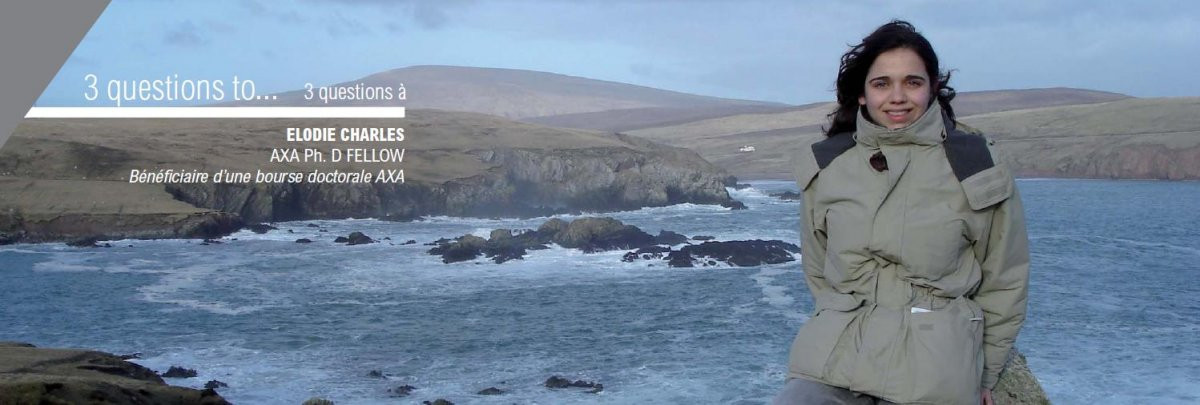Climate Change
Marine Biodiversity
Climate Adaptation & Resilience
Sea-level Rise & Erosion
Ocean Circulation
Greenhouse Gases Emissions
Ph.D
France
2008.11.30
Climate change impact on wave climate in coastal area, using dynamical downscaling : application to the Aquitanian coast, France
Dr. Elodie Charles investigated the impact of climate change and certain patterns of the atmospheric circulation on the wave conditions in the Bay of Biscay and along the Aquitanian coast. Her fi rst step was to produce a wave database of wave conditions (height, period and direction) in the Bay of Biscay for the present and future climate. Using dynamical downscaling, waves were modeled from the North Atlantic Ocean towards the Bay of Biscay at a 10-km spatial resolution exclusively from wind. Waves were simulated using the WAVEWATCH III wave model for the present climate (wind obtained from the ERA-40 reanalysis) and three future greenhouse gas emission scenarios (A2, A1B, B1) (wind obtained from the ARPEGE-Climat climate model). This database enabled her to investigate the present climate interannual variability and to highlight a strong link between local wave conditions and certain preferential patterns of the atmospheric circulation above the North Atlantic Ocean. For instance, a larger gradient between the Iceland high and the Azores low, corresponding to a positive phase of the North Atlantic Oscillation, is strongly related to an increase in wave heights and periods in the Bay of Biscay. In terms of the future climate, wave condition changes between present climate (1961-2000) and future scenarios (2061- 2100) were analyzed, showing a general decrease in wave heights in the Bay of Biscay as well as a clockwise shift of summer wave directions and winter swell directions.
This work provides a better understanding of the present and future wave climate in the Bay of Biscay and new material to investigate the potential impact of climate change on the morphodynamics of the Aquitanian coast.
WHAT PROCESSES DETERMINE THE WAVE CONDITIONS IN THE PRESENT AND FUTURE CLIMATE?

Could you briefly describe your research project?
My thesis deals with erosion on the beaches along the Aquitaine coast from the perspective of climate change. The sandy coasts are particularly vulnerable to weather conditions, such as storms and wind, and ocean conditions,like currents and sea level. Climate change can impact these conditions and thus the coast’s morphology on a time scale of several weeks or decades. I’m interested in the process of past and future waves both locally (Truc Vert beach) and regionally along the entire Aquitaine coast.
What types of tools are you using?
We are using digital models to simulate currents, waves, sea levels and sedimentary transport. To understand past and future waves along the Aquitaine coast, a model was developed to generate and propagate waves from the North Atlantic Ocean to the Aquitaine coasts based on wind data from global meteorological models.
What are the long-term implications of your research?
This work will provide a better understanding of the morphological changes taking place along the Aquitaine coast. We hope to contribute new information which could help define erosive storm events as well as critical areas, which require close attention in coming years. In addition, the database of past and future waves generated during my thesis research could be used for hydrodynamic or morphological studies in the Gulf of Gascogne.
To add or modify information on this page, please contact us at the following address: community.research@axa.com

Elodie
CHARLES
Institution
Bureau de Recherches Géologiques et Minières
Country
France
Nationality
French
Related articles
Sustainable Living & City
Climate Change
Climate Adaptation & Resilience
Urban Planning
Resilient Infrastructure & Safety
Environmental Justice
Post-Doctoral Fellowship
Australia
2023.06.20
Indicators for Climate Resilient City Planning
Expected start date:June-2023 Cities contribute enormously to global greenhouse emissions and are key drivers of climate change. By the same... Read more

Melanie
LOWE

